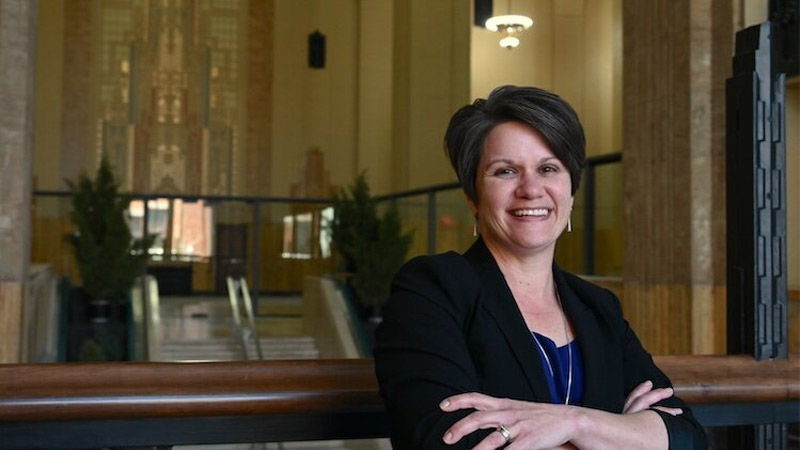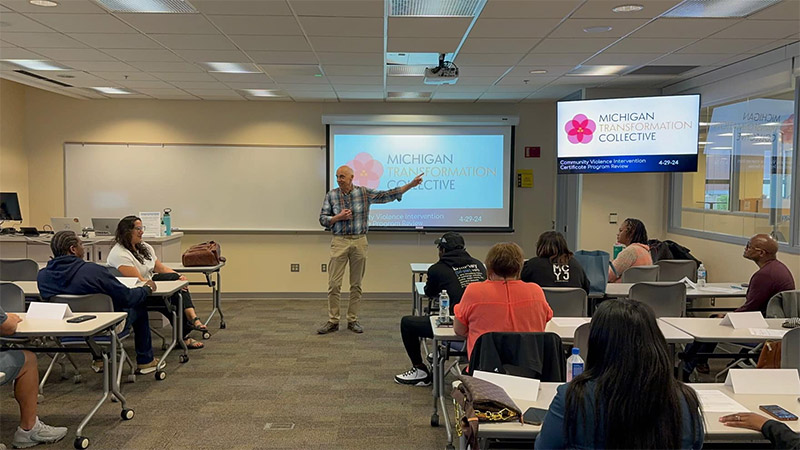Rich Sheridan shares his perspective on the value of joy.
Joy. That feeling of great pleasure and happiness resulting from success, good fortune, or a sense of well-being. What does it look like? A child with ice cream cone. A college graduate waving a diploma. A smiley face with tears melting out of the corners of its eyes.
Yes. If you have a smart device, you know that emoji meaning joy. It’s what Oxford Dictionaries picked as the 2015 Word of the Year and, yes, it’s a pictograph. The most widely used one too, according to the mobile technology business specialist Swiftkey, as that single emoji counted for 17% of all emojis texted in the U.S. this past year.
Joy. People crave it in their everyday life. Why? It makes them feel good. There’s a body of research associating health with joy. For example, those who rate in the upper levels of happiness on psychological tests develop about “50% more antibodies than average in response to flu vaccines,” according to Dr. Richard J. Davidson, the William James and Vilas Professor of Psychology and Psychiatry at the University of Wisconsin-Madison. Other joyful mental states like happiness, hopefulness, optimism and contentment also appear to reduce the risk or limit the severity of cardiovascular disease, pulmonary disease, diabetes, hypertension, upper-respiratory infections, and the common cold.
What makes people joyful? While scientific research has yet to find the answer for bottling and sale on shelves, a few things are known. For starters, research shows the best indicator of a person’s happiness to be the quality of close relationships. Whether one’s relationships are romantic, friendly or familial, the happier one is in social engagements, the happier one is in general. Other things bringing joy include hobbies, volunteering and a well-loved job. A job? Can a job really bring joy?
Rich Sheridan believes so. The author of Joy, Inc. and CEO, Chief Storyteller and co-founder of Menlo Innovations LLC, an Ann Arbor-based design and build business software firm, describes the company’s 2001 foundation as one built on the business value of joy. “At Menlo, we believe it is possible to delight people with the work we do. We’re not just here to build or design software. We are here specifically to delight the people who will one day use the software we design and build with our hearts, our hands, and our minds,” says Sheridan.
Well that sounds great for customers, but what about the 55-person staff who create those delightful software creations? Sheridan sheds some light,” ”To systemically produce that kind of joy in the world, we need some joy in the room.”
The first way that Menlo gets joy in the room is to “pump fear out of it.” One of the fundamental roles of Menlo leaders is to keep fear at bay. Normal fears like ‘Are we going to be in business next year?’ are ok as those what all companies should be afraid of. “What we don’t do is use fear to motivate people,” Sheridan lets on.
The second thing Menlo focuses on is filtering out ambiguity. People don’t like to wonder what they are supposed to do during the day. Ambiguity leaves people on edge and creates anxiety. Think the fight-or-flight response¾the physiological reaction that occurs in humans or animals when they perceive a harmful event is looming and threatens survival. Because of the way the body is wired, when people are afraid or anxious, their body behaves differently. Blood goes away from that big oxygen consumer, the pre-frontal cortex of the brain, and it goes out to the extremities so they can be ready to fight or take flight.
“Once people are in that mode, they can’t develop trust towards another. They don’t feel safe. The fundamental part of Menlo’s culture is to create collaborate. If we get enough collaboration going, we have teamwork. Once we have teamwork, we can get to, at least in our environment, what I believe virtually every company on the planet is seeking these days: creativity, energy, imagination, innovation, and invention,” offers Sheridan.
Creating a culture like the one at Menlo requires a leader to steadfastly commit to four key areas:
- Leaders don’t rest on hierarchical authority in order to lead. At Menlo, the leadership team doesn’t rely on titles to make the staff do what they are told or else they’ll be fired tomorrow. That mentality never wins. “You might get people to behave physically the way you want them to behave, but you’ll never capture their hearts,” warns Sheridan.
- Foster a culture that people actually believe in and connect to by sharing stories in ways to which the staff can relate. For Sheridan, it’s his ability to tell his own personal story: “I started out in the programming world with youthful joy. Next, I went to my dark place of disillusionment where everything betrayed me. Then, I got back to joy.” It’s that openness that draws his staff to say, “I see where you’re going with this, Rich. I want to join you and I want to be part of this.”
- Communicating with consistent optimism inspires others to stay with you in tough times.People just want to hear that “it’s going to be alright.” People are naturally inclined to follow someone in who they believe. A team watches their leader every second of every day see if to see if what he or she says equals what he or she does. Sheridan admits, “Look, I’m not perfect. I’ll be inconsistent at times. But, the team will forgive me if the majority of the time they see consistency in my actions.”
- Be vulnerable. Vulnerability means leaving “the door in your mind open enough that, if some team member has the courage to walk in and deliver helpful criticism, you are open enough to hear it and thank them for their courage.” This door policy is more open than the traditional “open door policy.”
So, how does this all play out at Menlo? You’re welcome to experience it live by booking a spot at www.menloinnovations.com/by-visiting/.
What will you see? Open and trusting culture in action, enjoyed by a team ranging in age from the early 20s to age 64.
Sheridan shares a memory, “I remember watching the 1976 Dr. Morris Massey video What You Are Now Is Where You Were When. We are influenced by where we grew up, when we grew up, and what was going on at the time. I think there are differences in work styles between age groups but the challenge is ‘Can we revel in those differences rather than resist them?’” Consider Millennials. “What I see in Millennials, having raised three of them, is that I believe they are shaped by their formative moment, which just like mine was a catastrophic one. For me, a Baby Boomer, it was Kennedy’s assignation. Their formative moment was 9/11. This is a group, probably more so than other generation, who fundamentally believe they can make the world better because of that experience. When you insert that into your team, you’ve discovered gold.”
You’ll also see open physical space. Explains Sheridan, “We didn’t build an open and collaborative workspace. We built an open and collaborative culture and allowed our work space to reflect it.” The fact that there are no walls, offices, cubes, or doors says to the staff and the world, “We value transparency. We value collaboration. We value seeing each other every day and working together, shoulder to shoulder.”
Relationships matter at Menlo as software engineers work in pairs. “These are introverted engineers. Yet, you hear laughter, conversation, and human energy because they’re working together every minute of every day,” says Sheridan who believes pairing works. Think airplane, surgeons, police officers, fire fighters or even parents of teenagers.
Then there’s literally transparency of Menlo’s workload on its “Work Authorization Board.” Tasks are written on notecards and progress is monitored by colored sticky dots. “We are a software company that doesn’t use software to plan our projects,” reveals Sheridan. Humans are visual, tactile creatures and crave seeing achievement. “We simply take advantage of our team seeing the big picture as cards flip and turn.”
At Menlo, you hear the word Joy a lot. It’s almost like a ping pong ball thrown around the open room. “As soon as I throw joy on the table, everybody’s saying joy this, joy that. It’s funny how infectious the word is,” Sheridan jokes. “It was the 2015 Word of the Year, right? I’d like to believe Menlo had some small part in that.”




